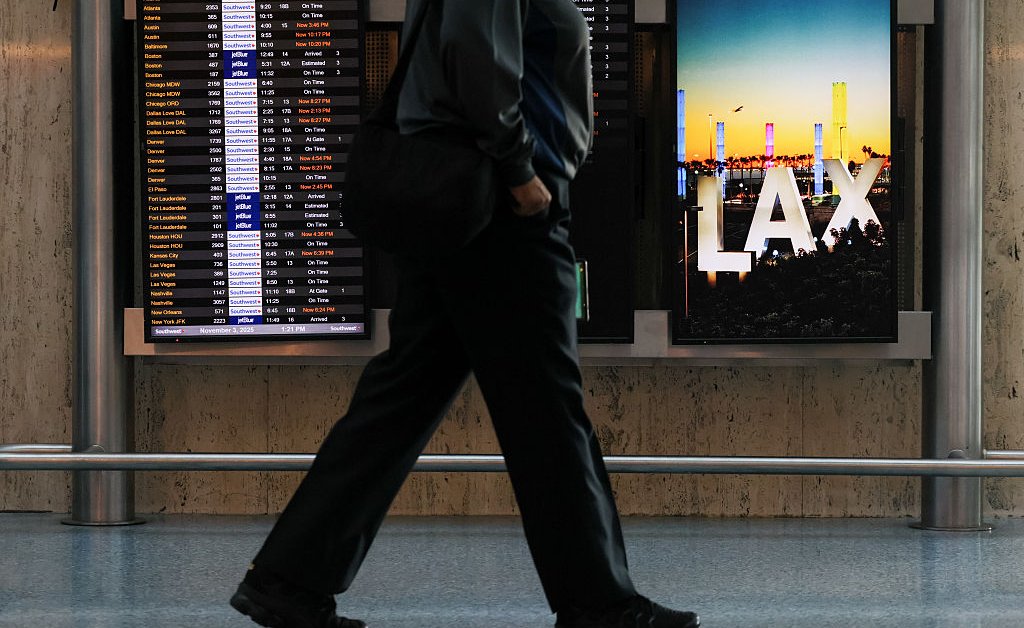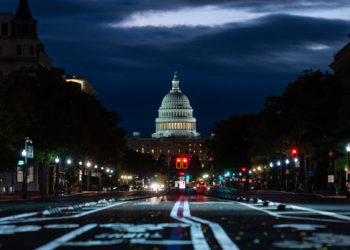The longest government shutdown in U.S. history has led to flight disruptions across the country, throwing many passengers’ travel plans into chaos. And the situation is likely to only get worse leading up to the Thanksgiving holiday.
Transportation Secretary Sean Duffy said on Wednesday that he’s calling for a 10% cut in flights at 40 major airports because of safety concerns. The cuts are set to go into effect on Friday.
Duffy said the move is intended to “alleviate the pressure” on air traffic controllers, who have been required to work for weeks without pay as the shutdown drags on. Shortages of on-duty controllers have led to flight cancellations and delays nationwide, including at some of the country’s busiest airports. There were about 288 delays at Newark Liberty International Airport in New Jersey on Thursday as of early afternoon, according to flight-tracking platform FlightAware; at the Chicago O’Hare International Airport, there were about 177.
Read more: Flight Cuts to Hit 40 Busiest U.S. Airports Due to Government Shutdown. Here’s What to Know
With no obvious end in sight for the shutdown, it’s unclear how long these flight disruptions will last. If you’re planning on flying in the coming days or weeks, here are some steps to consider taking—and some options you have if your flight is canceled.
Keep yourself up-to-date on the status of your flight
Before you leave for the airport, it’s a good idea to check the status of your flight with your airline to see if it’s been delayed or canceled. You can also check the Federal Aviation Administration website or FlightAware to see if the airport you’re flying out of is experiencing a lot of delays or cancellations, which can give you a sense of how busy the airport might be. You might want to leave for the airport earlier than usual to factor in extra time for long security lines.
You can also sign up for phone or email alerts with your airline, so you can automatically get notified of any disruptions to your flight. Multiple airlines have said they will inform customers whose flights are impacted by the flight cuts as soon as possible. When you get to the airport, make sure to look at the screens there to check the status of your flight.
If your flight is canceled, talk to customer service
If you receive a notification that your flight has been canceled, the first thing you should do is talk to customer service for the airline, either by calling, going online, or going in person to the airline’s help desk at the airport. Some travelers have also had luck contacting their airline on the social media platform X. Following Duffy’s announcement, airlines such as United and Frontier have provided information about how affected customers can rebook flights or said they will make that information available to people whose flights are cancelled. Southwest Airlines said it will “automatically” rebook passengers in most cases.
Once you get through to customer service, they’ll rebook you on a different flight, free of charge. But be patient—if a lot of passengers are experiencing disruptions, airlines might have trouble rebooking people quickly, so you might have to wait a few days before you can get on another flight.
If your airline cancels your flight, and you decide you don’t want to be rebooked on another one, the airline has to refund you the money you spent on your initial ticket—even if it was a non-refundable one. You could also get refunded for extra money you may have spent for your initial flight, such as bag fees or seat upgrades.
Consider rescheduling your trip, or getting to your destination another way
Some travel experts are recommending that, if your trip isn’t urgent, you might want to consider rescheduling it to avoid the inconvenience of flying during the shutdown. Or, if it’s possible with your plans, you might want to think about traveling by train, car, or bus instead.
The post Here’s What You Can Do If Your Flight Is Disrupted By the Shutdown appeared first on TIME.



